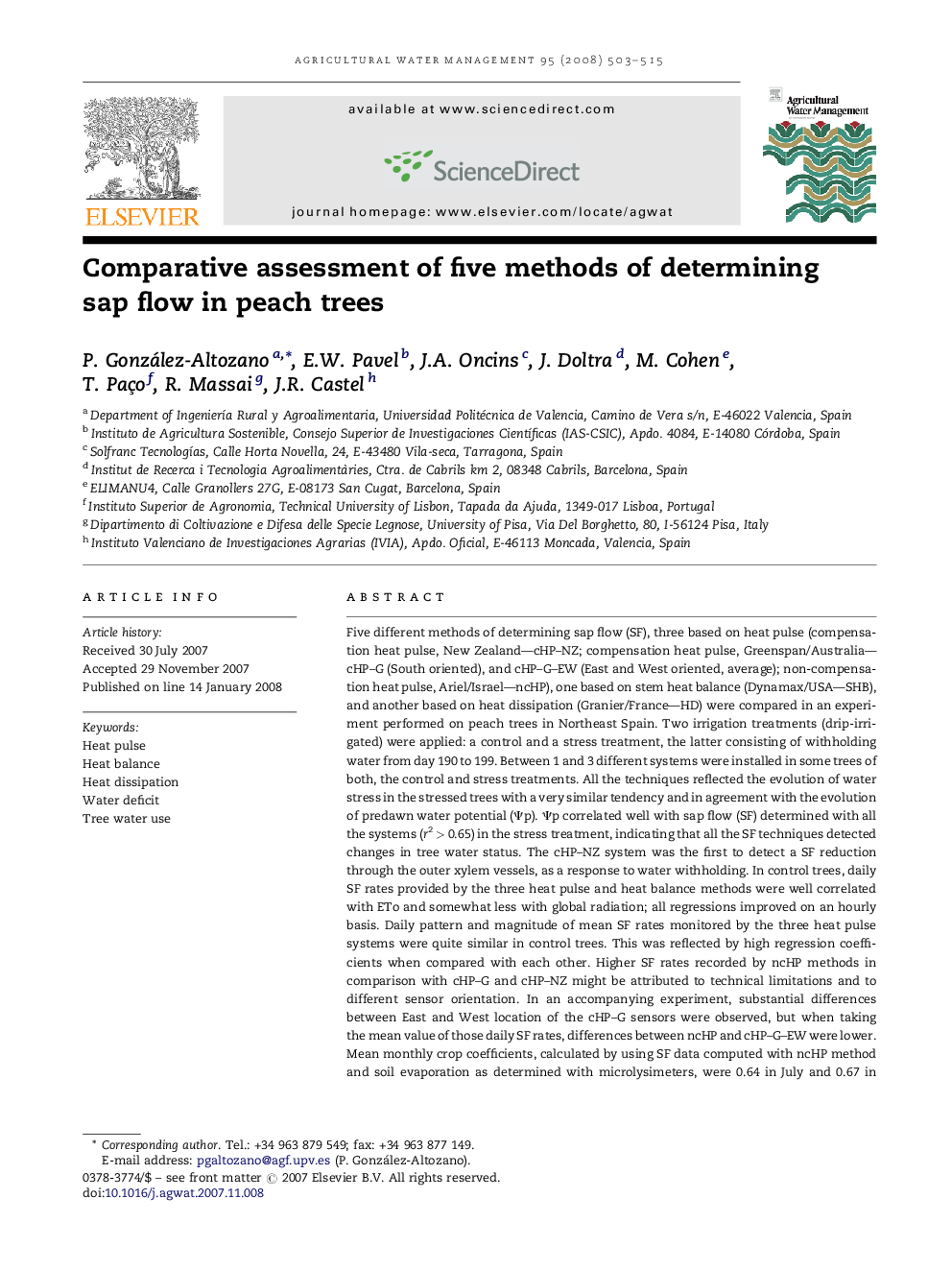| کد مقاله | کد نشریه | سال انتشار | مقاله انگلیسی | نسخه تمام متن |
|---|---|---|---|---|
| 4479659 | 1316453 | 2008 | 13 صفحه PDF | دانلود رایگان |

Five different methods of determining sap flow (SF), three based on heat pulse (compensation heat pulse, New Zealand—cHP–NZ; compensation heat pulse, Greenspan/Australia—cHP–G (South oriented), and cHP–G–EW (East and West oriented, average); non-compensation heat pulse, Ariel/Israel—ncHP), one based on stem heat balance (Dynamax/USA—SHB), and another based on heat dissipation (Granier/France—HD) were compared in an experiment performed on peach trees in Northeast Spain. Two irrigation treatments (drip-irrigated) were applied: a control and a stress treatment, the latter consisting of withholding water from day 190 to 199. Between 1 and 3 different systems were installed in some trees of both, the control and stress treatments. All the techniques reflected the evolution of water stress in the stressed trees with a very similar tendency and in agreement with the evolution of predawn water potential (Ψp). Ψp correlated well with sap flow (SF) determined with all the systems (r2 > 0.65) in the stress treatment, indicating that all the SF techniques detected changes in tree water status. The cHP–NZ system was the first to detect a SF reduction through the outer xylem vessels, as a response to water withholding. In control trees, daily SF rates provided by the three heat pulse and heat balance methods were well correlated with ETo and somewhat less with global radiation; all regressions improved on an hourly basis. Daily pattern and magnitude of mean SF rates monitored by the three heat pulse systems were quite similar in control trees. This was reflected by high regression coefficients when compared with each other. Higher SF rates recorded by ncHP methods in comparison with cHP–G and cHP–NZ might be attributed to technical limitations and to different sensor orientation. In an accompanying experiment, substantial differences between East and West location of the cHP–G sensors were observed, but when taking the mean value of those daily SF rates, differences between ncHP and cHP–G–EW were lower. Mean monthly crop coefficients, calculated by using SF data computed with ncHP method and soil evaporation as determined with microlysimeters, were 0.64 in July and 0.67 in August. SF systems can be used to detect plant water stress related to control, and might be useful for irrigation scheduling based on plant water status. The SF techniques analysed showed potential to better determine actual plant water necessities than other traditional methods, but a preceding calibration is needed.
Journal: Agricultural Water Management - Volume 95, Issue 5, May 2008, Pages 503–515